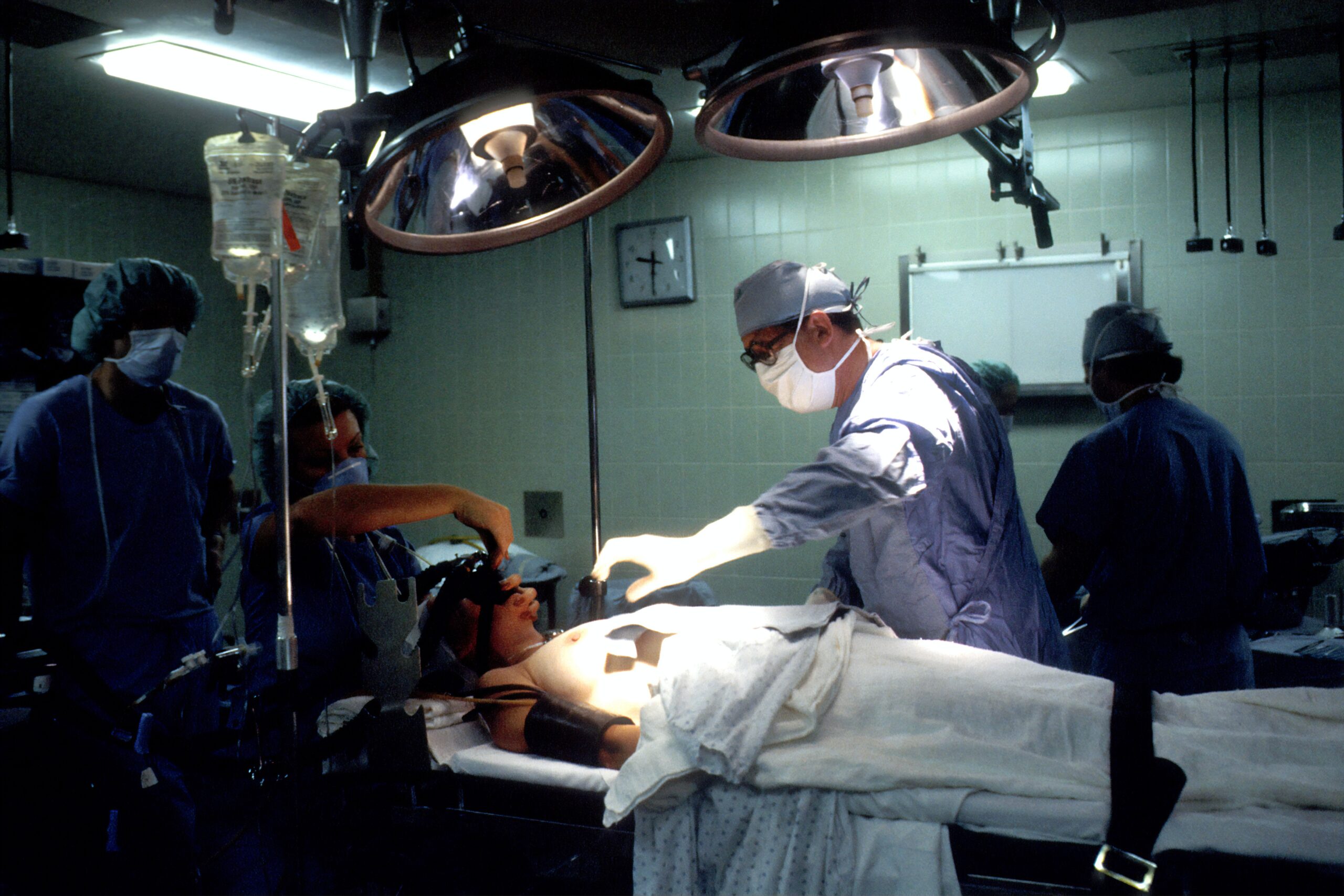As you age, it is quite common for the prostate to undergo changes. This small gland, located just below the bladder in men, tends to enlarge over time and can cause various symptoms. While these changes are considered normal, it is important to understand the potential impact they may have on your health and well-being. In this article, we will explore the typical alterations that occur in the prostate with age, and provide insights into how you can maintain optimal prostate health as you grow older. So, let's dive into this fascinating topic and learn more about the prostate changes that are a natural part of the aging process.

Understanding the Prostate
What is the prostate?
The prostate is a small gland located in the lower abdomen, just below the bladder and in front of the rectum. It is an important part of the male reproductive system, responsible for producing seminal fluid that nourishes and transports sperm during ejaculation. The size of the prostate can vary over a man's lifetime, and it undergoes certain changes with age.
Location and function of the prostate
As mentioned earlier, the prostate gland is situated below the bladder and surrounds the urethra, which is the tube through which urine and semen pass. Its prime function is to secrete a fluid that forms a part of semen, helping to protect and nourish sperm. During ejaculation, the muscular walls of the prostate contract, allowing the release of semen through the urethra.
Structure and components of the prostate
The prostate is composed of three main regions: the peripheral zone, the central zone, and the transition zone. The peripheral zone is the largest and most important for the production of seminal fluid. The central zone surrounds the ejaculatory ducts, and the transition zone encircles the urethra. Each of these regions plays a role in different prostate conditions and changes that occur with age.
Age-Related Changes in the Prostate
Understanding normal aging process in the prostate
As you age, it is perfectly normal for the prostate to undergo changes. These changes can include an increase in size, alterations in the composition of glandular tissue, and hormonal fluctuations. These changes are typically associated with hormonal imbalances that occur over time as testosterone levels decrease.
Significant age-related changes in prostate size
One of the most notable changes that occur in the prostate with age is an increase in size. This is known as benign prostatic hyperplasia (BPH) and is a common condition among older men. BPH can cause the prostate to enlarge and place pressure on the urethra, leading to urinary symptoms such as frequent urination, weak urine flow, and difficulty emptying the bladder completely.
Changes in prostate tissue with age
In addition to changes in size, the composition of prostate tissue can also change with age. As men get older, the ratio of glandular tissue to fibrous tissue in the prostate may shift, leading to alterations in its structure. These changes can contribute to the development of certain prostate conditions, such as the increased risk of prostate cancer.
Conditions Related to Age-Related Prostate Changes
Risk of Prostate cancer
Age is a significant risk factor for developing prostate cancer. As men age, the likelihood of developing prostate cancer increases. Although the exact cause of prostate cancer is unknown, factors such as genetics, race, and lifestyle choices can also influence a person's risk. Regular screening and early detection are crucial in managing prostate cancer effectively and improving outcomes.
Understanding Prostatitis
Prostatitis is the inflammation or infection of the prostate gland. While it can affect men of all ages, age-related changes in the prostate can increase the risk of developing prostatitis. Symptoms include pain or discomfort in the pelvic area, urinary problems, and sometimes fever. Treatment options vary depending on the cause of the inflammation and may include antibiotics, anti-inflammatory medications, and lifestyle modifications.
Influence of age on development of Benign Prostatic Hyperplasia (BPH)
Benign prostatic hyperplasia, or BPH, is a non-cancerous enlargement of the prostate gland. It primarily affects older men and is attributed to age-related hormonal changes. These changes can lead to an overgrowth of prostate cells, causing the gland to press against the urethra and resulting in urinary symptoms. Treatment options for BPH range from medication to surgery, depending on the severity of symptoms and individual circumstances.
Symptoms of Age-Related Prostate Changes
Changes in urination patterns
Age-related prostate changes can significantly impact urination patterns. Common symptoms include increased frequency of urination, especially during the night (nocturia), weak urine flow, difficulty starting or stopping urination, and the sensation of incomplete emptying of the bladder. If you notice any changes in your urination patterns, it is important to consult a healthcare professional for further evaluation.
Pain or discomfort in pelvic area
Age-related prostate changes, particularly prostatitis, can cause pain or discomfort in the pelvic area. This pain may be constant or intermittent and can range from mild to severe. It may also be accompanied by other symptoms such as urinary problems or sexual dysfunction. If you experience persistent pelvic pain, it is essential to seek medical attention for proper diagnosis and management.
Sexual function and changes associated with prostate aging
Age-related changes in the prostate can also affect sexual function. Some men may experience erectile dysfunction or difficulty achieving and maintaining an erection. Others may notice a decrease in libido or changes in ejaculation, such as decreased force or volume. These changes can have a significant impact on a man's sexual health and overall quality of life. Seeking medical advice can help address and manage these issues effectively.

Prostate Changes and Testosterone Levels
The impact of age on testosterone production
Testosterone, the primary male sex hormone, plays a crucial role in prostate health. However, as men age, testosterone levels tend to decline naturally. This decline in testosterone production can contribute to age-related changes in the prostate gland, including an increased risk of BPH and alterations in the composition of prostate tissue. Understanding the relationship between testosterone and prostate health is essential in managing age-related changes effectively.
How low testosterone affects prostate health
Low testosterone levels can potentially impact prostate health. Some studies suggest that low testosterone may be associated with an increased risk of developing prostate cancer, although more research is needed to fully understand this relationship. Additionally, low testosterone levels can contribute to erectile dysfunction, diminished libido, and other sexual health issues. Consulting with a healthcare professional can help determine the best course of action for managing low testosterone and its impact on prostate health.
Correlation between testosterone levels and prostate conditions
Despite the potential link between testosterone levels and prostate conditions, the relationship is still being studied. While it is clear that testosterone plays a role in prostate health, the exact mechanisms and interactions between testosterone and different prostate conditions are not fully understood. Ongoing research aims to uncover more insights into how testosterone levels influence prostate health and the development of various prostate conditions.
Detection and Diagnosis of Prostate Changes
Role of Prostate-Specific Antigen (PSA) testing
Prostate-specific antigen (PSA) testing is a common screening tool used to measure the level of PSA in the blood. Elevated PSA levels can indicate various prostate conditions, including prostate cancer. However, it is important to note that PSA testing is not foolproof and can lead to false-positive or false-negative results. It is best to discuss the benefits and limitations of PSA testing with a healthcare professional to determine if it is appropriate for you.
Importance of DRE examination
Digital rectal examination (DRE) involves a healthcare professional inserting a gloved finger into the rectum to assess the size, shape, and consistency of the prostate gland. This physical examination allows for the detection of abnormalities in the prostate that may not be evident through other diagnostic tests. DRE, when performed along with PSA testing and other screening tools, can provide a more comprehensive evaluation of prostate health.
Use of Imaging in detecting prostate changes
Imaging techniques such as ultrasound, MRI, and CT scans can be employed to assess the structure and abnormalities of the prostate gland. These non-invasive imaging modalities can help detect prostate changes, including tumors, cysts, and other abnormalities. Imaging, in conjunction with PSA testing and DRE, can aid in the accurate diagnosis and management of various prostate conditions.

Preventing Prostate Complications in Aging
Significance of regular checkups
Regular checkups are crucial for maintaining prostate health as you age. These checkups may involve discussions about your medical history, screening tests such as PSA testing, and physical examinations like DRE. Early detection of prostate conditions greatly improves the chances of successful treatment and management. By scheduling regular checkups with your healthcare provider, you can stay proactive in protecting your prostate health.
Healthy lifestyle choices for prostate health
Adopting a healthy lifestyle is essential for maintaining prostate health. Engaging in regular physical activity, maintaining a healthy weight, and managing stress levels can positively influence prostate health. Additionally, avoiding excessive alcohol consumption and not smoking can further contribute to overall prostate health. By incorporating these healthy habits into your daily routine, you can support the well-being of your prostate.
Role of nutrition and diet in maintaining prostate health
A balanced and nutritious diet can play a vital role in maintaining prostate health. Consuming a variety of fruits, vegetables, whole grains, and lean proteins can provide essential vitamins, minerals, and antioxidants that support prostate health. Some studies suggest that certain foods, such as tomatoes and green tea, may have specific benefits for prostate health. Consulting with a healthcare professional or a registered dietitian can help you create a personalized diet plan that promotes prostate health.
Treatment Options for Age-Related Prostate Problems
Medications used in prostate conditions
Medications are commonly prescribed to manage various prostate conditions. For example, in the case of BPH, alpha-blockers or 5-alpha-reductase inhibitors may be prescribed to reduce the size of the prostate or relax the muscles around the bladder and prostate. In prostate cancer, hormone therapy, chemotherapy, or targeted therapies may be recommended. The specific treatment options will depend on the individual's condition, symptoms, and overall health.
Role of surgery in managing prostate problems
Surgery may be necessary for certain prostate conditions that do not respond adequately to medication or other non-invasive treatments. Procedures such as transurethral resection of the prostate (TURP) or laser therapy can help alleviate symptoms caused by an enlarged prostate. In cases of prostate cancer, surgical interventions like radical prostatectomy or robotic-assisted surgery may be performed to remove the cancerous tissue. Surgical options will be determined based on the specific condition and consultation with a healthcare professional.
Non-invasive treatments for prostate conditions
Non-invasive treatments can also be considered for managing prostate conditions. For BPH, minimally invasive procedures like prostate artery embolization or transurethral microwave thermotherapy may be options. High-intensity focused ultrasound (HIFU) is a non-invasive treatment that uses ultrasound waves to destroy cancerous cells in localized prostate cancer. Other non-invasive approaches, such as watchful waiting or active surveillance, may be recommended depending on the individual's circumstances. Consulting with a healthcare professional can help determine the most suitable non-invasive treatment options.
Impacts of Prostate Conditions on Quality of Life
Effects on sexual health and relationships
Prostate conditions can have a significant impact on sexual health and relationships. Erectile dysfunction, decreased libido, and other sexual problems can arise from age-related prostate changes or certain treatments. These changes can strain relationships and lead to emotional distress. Open communication with your partner, seeking support from healthcare professionals or support groups, and exploring alternative ways to maintain intimacy can help navigate and minimize the impact of prostate conditions on sexual health and relationships.
Mental health and prostate conditions
Prostate conditions can also have implications for mental health. The diagnosis of prostate cancer or living with chronic prostate-related issues can cause anxiety, depression, and stress. It is important to recognize the emotional impact of prostate conditions and seek appropriate support. Engaging in activities that promote mental well-being, such as regular exercise, practicing relaxation techniques, and seeking professional counseling, can contribute to a positive mental outlook despite the challenges.
Navigating social life with prostate conditions
Prostate conditions can affect your social life to some extent. Urinary symptoms may require frequent bathroom breaks, which can be inconvenient during social outings. Planning ahead, seeking venues with readily accessible restrooms, or discussing your needs with friends and family can help minimize any potential disruptions. It is important to remember that many individuals have experienced similar challenges and that open communication and understanding can help create a supportive social network.
Latest Research and Developments on Prostate Health
Promising advancements in prostate treatments
Ongoing research continues to advance the understanding and treatment of various prostate conditions. Promising developments include the use of targeted therapies that focus on specific genetic alterations in prostate cancer, immunotherapies that harness the body's immune system to fight cancer, and innovative surgical techniques that minimize side effects and improve outcomes. Staying informed about the latest research and discussing potential treatment options with healthcare professionals can help identify the most suitable treatment approaches for specific prostate conditions.
Current studies on prevention of prostate conditions
Prevention plays a crucial role in maintaining prostate health. Numerous studies are currently underway to investigate strategies for preventing prostate conditions, including prostate cancer. These studies explore the potential benefits of lifestyle modifications, dietary interventions, and the use of medications or supplements in reducing the risk of developing prostate conditions. By participating in these studies or discussing prevention strategies with healthcare professionals, you can contribute to the advancement of knowledge in prostate health and potentially reduce your personal risk.
The future of prostate health management
The future of prostate health management holds many possibilities. Increased understanding of the genetic factors involved in prostate conditions may lead to more personalized treatments and targeted interventions. Advancements in imaging technologies may enhance early detection and improve diagnostic accuracy. Additionally, ongoing research in immunotherapies and the development of novel treatment approaches may revolutionize the way prostate conditions are managed in the future. By staying informed and actively engaging in discussions about prostate health with healthcare professionals, you can ensure that you are up-to-date with the latest developments and opportunities for proactive prostate health management.
In conclusion, age-related changes in the prostate are a normal part of the aging process. Understanding these changes, their impact on prostate health, and the available detection, prevention, and treatment options is essential. Regular checkups, adopting a healthy lifestyle, and discussing any concerns with healthcare professionals can help maintain prostate health and ensure a better quality of life as you age. Stay informed, proactive, and empowered in taking care of your prostate health.

